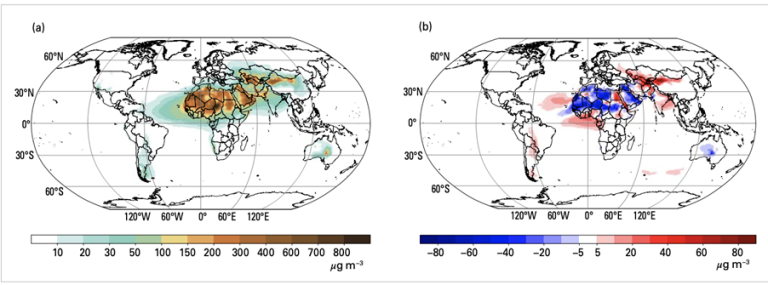According to the World Meteorological Organization report. Dust concentrations in the most affected areas in 2023 were above the long-term average.But it is slightly lower than that recorded in 2022.
Sand and dust storms in 2023
The strongest storm this year devastated Mongolia in March 2023It has affected more than 4 million square kilometersincluding 20 provinces in China, according to the World Meteorological Organization’s Airborne Dust Bulletin. The report’s release coincided with International Day for Combating Sand and Dust StormsWhich was held on July 12th.
every year, About 2 billion tons of dust enter the atmosphere.Darkening skies and deteriorating air quality in areas that may be thousands of kilometers away, affecting economies, ecosystems, weather and climate. It is largely about It is a natural process, although much of it is caused by inadequate management of water and land resources..
Forecasts and early warnings
The accuracy of monitoring and forecasting has improved in recent years. This is thanks to advances in numerical models and monitoring systems. Sand and Dust Storm Warnings Assessment and Advisory System Established in 2007, WMO SDS-WAS seeks to improve warnings through specialized regional centres and combines operational and research work.
However, it’s not all bad news. Transporting sand and dust long distances across oceans is also essential. A valuable source of nutrients and plays an important role in international fisheries management..
Critical areas
In 2023, the global average will be Average annual surface dust concentrations were slightly lower than in 2022.This is mainly due to the decrease in dust emissions in several areas with high dust density in the world, such as North Africa, the Arabian Peninsula, the Iranian Plateau, northern India, central Australia and northwestern China.
However, the annual average surface dust concentration recorded in 2023 in western Central Asia, northern and central China and southern Mongolia was higher than in 2022, according to the bulletin.
The concentration of an air pollutant is expressed in micrograms (millionths of a gram) per cubic meter of air or micrograms m-3.Spatially, the estimated annual maximum surface dust concentration was recorded in some areas of Chad and North and Central Africa (about 800 to 1100 μg m3). In the Southern Hemisphere, dust concentrations reached their highest levels in parts of central Australia and the west coast of South Africa.

Of these known dust source areas, Winds can carry dust aerosols to many parts of the world.over distances ranging from hundreds to thousands of kilometers. The areas most susceptible to long-range dust transport are the northern part of the tropical Atlantic Ocean, between West Africa and the Caribbean, South America, the Mediterranean Sea, the Arabian Sea, the Bay of Bengal, and central and eastern China.
In 2023, African dust moves across the Atlantic Ocean Parts of the Caribbean were invaded, and dust haze from the East Asian Gobi Desert continued to reach the Bohai Sea and the Yellow Sea.
In the most affected regions, the average annual concentration of surface dust recorded in 2023 exceeded the climatic average. Hotspots were detected in South America and parts of northern and central Africa.

Dust and oceans
However, there are some Positive facts.
A new study was published in the WMO Bulletin showing that: Dust deposition from the Sahara Desert into the open waters of the Atlantic Ocean affects bonito fishing. striped belly Providing it with iron, phosphorus and elements that enhance the growth of phytoplankton.The new organic matter produced by the small fish is transferred to the larger predators through the food web, which has a positive impact on the entire marine ecosystem. In fact, Dust plays an important role in international fisheries management..
From the 1950s to the 1920s, the annual catch of striped bonito in the Atlantic increased from less than 1,000 tons to an average level of 250,000 tons.
During the 1990s and 2000s, catches of striped bonito in the eastern Atlantic were about eight times greater than those in the western Atlantic.In the past decade, catches in the eastern Atlantic have accounted for about 90% of the total Atlantic catch, a figure that highlights the large amount of biomass of striped bonito that is not found in West Africa and that is maintained thanks to the fertilizing effect of dust.

More information from the WMO press release, here.
